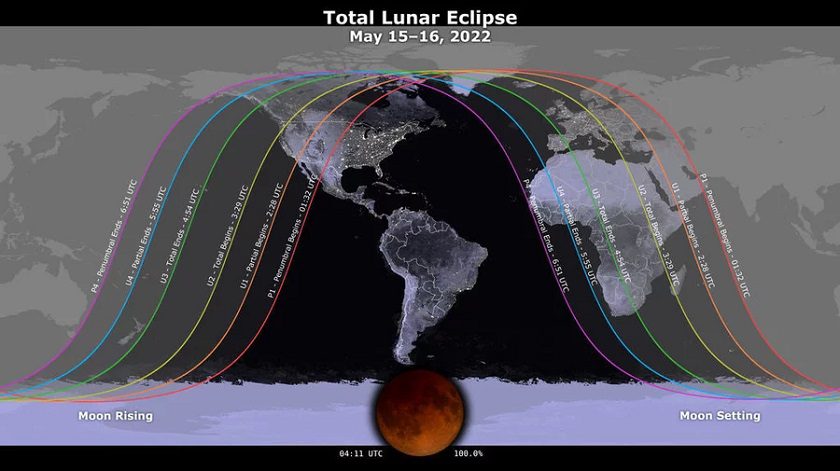
You can receive links to family-friendly events and more downloadable resources like Birding Adventures Beyond Our Backyards when you get our free, weekly newsletter. Register here: https://conta.cc/3wrLPKr
We suggest downloading the Merlin Bird ID to help you identify birds by color, size, location and even song (or screech)! https://merlin.allaboutbirds.org/
Download Birding Adventures Beyond Our Backyards: birding-adventures-beyond-our-backyards
Palo Corona and the Carmel River South Bank Trail
Activity Level: Moderate – Walking a 2-mile loop trail that is flat, mostly paved, and meanders through multiple habitat types.
Location: Palo Corona Regional Park, 4860 Carmel Valley Rd., Carmel Valley. Meet in front of the flag pole, next to the visitor center. The Carmel River runs through the recently expanded Palo Corona Regional Park which now includes the retired Rancho Cañada Golf Course and South Bank Trail. This is a natural vagrant trap [attractive habitat to birds] in the fall. The 2018 field trips saw six species of warblers and six species of sparrows among a wider variety of birds. It’s also a good place for out-of-towners to build their California state list!
Hatton Canyon – Carmel Hot Spot
Activity Level: Moderate – roughly 2-miles on flat trails
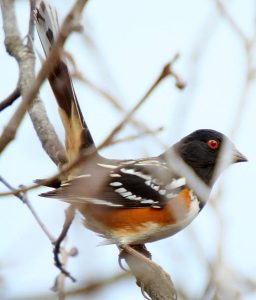 Location: The intersection of Flanders Drive and North Carmel Hills Drive, right off Highway 1, just before the Carmel High School stop light at Ocean Avenue. Hatton Canyon and the Carmel Mission trail involve a leisurely birding walk on flat trails through riparian and tall pines woodlands. This is a heavily forested area with a large number of bird species. Migrating songbirds and hummingbirds, several varieties of woodpeckers, woodland raptors, nonmigratory birds, and other feathered friends are expected. Regularly seen in Hatton Canyon are: Anna’s Hummingbirds; Wrentits; California thrashers; Red-shouldered and Cooper’s Hawks; Band-tailed Pigeons; Nuttall’s, Acorn, and Downy Woodpeckers; California and Spotted Towhees; California Scrub and Steller’s Jays; Blue-gray Gnatcatchers. Bring a hat, sunscreen, and water!
Location: The intersection of Flanders Drive and North Carmel Hills Drive, right off Highway 1, just before the Carmel High School stop light at Ocean Avenue. Hatton Canyon and the Carmel Mission trail involve a leisurely birding walk on flat trails through riparian and tall pines woodlands. This is a heavily forested area with a large number of bird species. Migrating songbirds and hummingbirds, several varieties of woodpeckers, woodland raptors, nonmigratory birds, and other feathered friends are expected. Regularly seen in Hatton Canyon are: Anna’s Hummingbirds; Wrentits; California thrashers; Red-shouldered and Cooper’s Hawks; Band-tailed Pigeons; Nuttall’s, Acorn, and Downy Woodpeckers; California and Spotted Towhees; California Scrub and Steller’s Jays; Blue-gray Gnatcatchers. Bring a hat, sunscreen, and water!
Owls of Robinson Canyon
Activity Level: Easy – mostly by car, making stops to listen and look for owls.
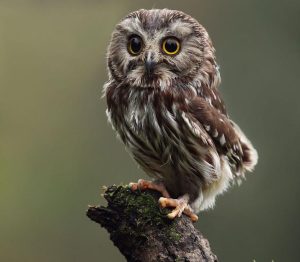 Location: REI Parking Lot – 145 General Stilwell Dr. Marina. Meet at the seating area in front of REI. Robinson Canyon is one of California’s most productive owling sites. Western Screech, Great Horned, Barn, and Northern Saw-whet owls are all likely. Northern Pygmy and the endangered Spotted Owl are possibilities. These field trips are a must if you’re looking for owls. Bring a flashlight and dress warmly. Most owls will only be heard, and not seen.
Location: REI Parking Lot – 145 General Stilwell Dr. Marina. Meet at the seating area in front of REI. Robinson Canyon is one of California’s most productive owling sites. Western Screech, Great Horned, Barn, and Northern Saw-whet owls are all likely. Northern Pygmy and the endangered Spotted Owl are possibilities. These field trips are a must if you’re looking for owls. Bring a flashlight and dress warmly. Most owls will only be heard, and not seen.
Seaside Seagulls
Activity Level: Moderate- Depending on the location of the gulls, we may walk a short distance on the sand at Seaside State Beach. The half-mile walk from Seaside Beach to Robert’s Lake is flat, mostly on paved sidewalks.
Location: Seaside State Beach Parking Lot, Sand Dunes Dr, Seaside. The Heermann’s Gull is one of the Monterey area’s most cherished birds. Seaside hosts the only breeding colony in the whole United States! Nearly all other Heermann’s Gulls breed south of the border on Isla Rasa, a small island in the Gulf of California which is vulnerable to climate change and overfishing. The efforts of this small colony of scrappy gulls to continue nesting here has a long and dramatic history. Sea and shorebirds that will be present are scoters, loons, grebes, plovers, sanderlings, whimbrels, and many more.
Mobility-minded Birding
Activity Level: Easy – flat, compacted walkway with many places to sit.
Location: At the Pajaro River Picnic Area. The CARES park is in Watsonville along the Pajaro River. Exit highway 1 at 129 and head West. Travel down W Beach St and take a left on Clearwater Ln as you are headed toward the Watsonville Wastewater Treatment Plant on W Beach St. The park is at the end of Clearwater Ln. GPS Coordinates: 36.88638374815584, -121.78203947329817
Focus on slow, mindful birding, where there are multiple spots to stop and sit and listen to the calls and songs around us. While this walk might be more interesting for beginning birders, seasoned birders can participate and learn to observe bird behavior and interactions that make bird watching even more fulfilling! While this park is not strictly ADA accessible, the trail is paved or hard-packed dirt.
Birding Pajaro Dunes & River Mouth
Activity Level: Moderate – mostly flat, but some hiking on sand and uneven surfaces.
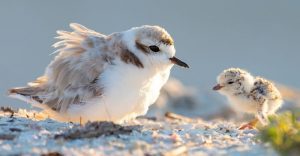 Location: End of W Beach St. near the intersection of W Beach and Shell Rd. Outside of the Palm State Beach Parking lot. Shorebirds, songbirds, and waterfowl are all likely in the varied habitats of Pajaro Dunes. Pajaro means “bird”, and is the perfect name for one of the best places to look for rarities and migrants. Snowy Plovers nest on the dunes themselves, and the Pajaro River Mouth has long been a premier location for shorebirds, gulls and terns. Stands of Monterey Cypress and willow patches provide habitat for a variety of passerines. This area offers some of the richest birding areas of the entire Pajaro Valley. Aat nearby Shorebirds Pond you may find interesting warblers.
Location: End of W Beach St. near the intersection of W Beach and Shell Rd. Outside of the Palm State Beach Parking lot. Shorebirds, songbirds, and waterfowl are all likely in the varied habitats of Pajaro Dunes. Pajaro means “bird”, and is the perfect name for one of the best places to look for rarities and migrants. Snowy Plovers nest on the dunes themselves, and the Pajaro River Mouth has long been a premier location for shorebirds, gulls and terns. Stands of Monterey Cypress and willow patches provide habitat for a variety of passerines. This area offers some of the richest birding areas of the entire Pajaro Valley. Aat nearby Shorebirds Pond you may find interesting warblers.
Pinto Lake – A Local Favorite
Activity Level: Moderate – This is a large park so be prepared for some stairs, sometimes narrow trails, poison oak and close to 3 miles of walking.
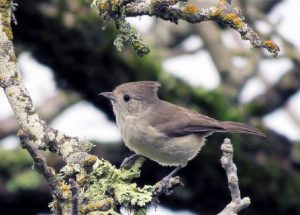 Location: Pinto Lake County Park, 757 Green Valley Rd, Watsonville. Park in the lot near the dog park (first lot on the right). Pinto Lake is home to numerous raptors, woodpeckers, waders, songbirds and especially waterfowl in the Fall. If you are looking for California specialities there should be California Quail, Acorn and Nuttall’s Woodpeckers, Steller’s and California Scrub-jays, Chestnut-backed Chickadee, Oak Titmouse, Wrentit, California Thrasher and Towhee. This location is recommended for both beginners and experienced birders as something unusual nearly always shows up.
Location: Pinto Lake County Park, 757 Green Valley Rd, Watsonville. Park in the lot near the dog park (first lot on the right). Pinto Lake is home to numerous raptors, woodpeckers, waders, songbirds and especially waterfowl in the Fall. If you are looking for California specialities there should be California Quail, Acorn and Nuttall’s Woodpeckers, Steller’s and California Scrub-jays, Chestnut-backed Chickadee, Oak Titmouse, Wrentit, California Thrasher and Towhee. This location is recommended for both beginners and experienced birders as something unusual nearly always shows up.
Watsonville Sloughs
Activity Level: Easy – flat, paved or compacted trails.
Location: Parking behind Body Zone Health & Fitness Club – 1810 Main St. Watsonville. This location starts along the upper portion of Struve Slough. If there is morning sun, the light is nearly perfect to look over the slough. The area is good for viewing both land and water birds. Depending on your energy, you can drive to another area of the sloughs, either lower Struve Slough, or Harkin’s Slough. The entire Watsonville Slough system is excellent for birding, and its preservation and access trails are the result of grassroots conservation efforts and a responsive City Council.
Ohlone Loop Trail
Location: By the Panda Express on 20 Ohlone Pkwy Watsonville – Ohlone Loop trail.
Neary Lagoon Exploration
Activity Level: The trail will be mostly flat, except for one paved ramp down to the lagoon, which is not very steep. The trail is compacted/paved trail. Some travel will be along a boardwalk system that takes you through the lagoon.
Location: Neary Lagoon Park, near the public restrooms at the parking area right before the entrance to the wastewater treatment facility. Additional parking can be found along California Ave, then walk across the street to the park. 110 California St, Santa Cruz. We will meet at the grassy area near the restrooms.
Come explore the many water fowl and song birds that live in the reeds at Neary Lagoon. This site is a hidden gem near downtown Santa Cruz. An oasis for birds, sandwiched between the wastewater treatment plant and the beach boardwalk!
Birds of Creekside Terrace at Fort Ord
Activity level: Moderate to difficult
Location: Creekside Terrace Trailhead, Fort Ord National Monument, California, Creekside Terrace, Salinas. Fort Ord has a rich history, diverse habitat and bountiful opportunities for birding. It’s a coastal gem with rolling hills, pockets of chaparral, and oak woodlands. You will see a huge diversity of plant life and animals in habitats that include stream side corridors, grasslands, maritime chaparral, oak woodlands and seasonal pools.
Big Sur River Mouth and California Condors
Activity Level: Moderate. The birding route is about 1.5 miles on packed granite paths or pavement and there aren’t many options to sit down. Restrooms are available at the start of the trip loop.
Location: Andrew Molera State Park parking lot. There is a $10 fee per vehicle for parking at Andrew Molera. Bring plenty of water to drink, lunch, and sunscreen. Andrew Molera State Park is approximately 50 miles from Watsonville.
Point Piños & the Monterey Peninsula
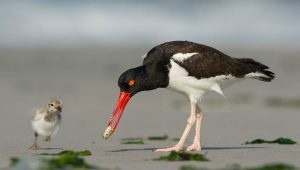 Location: Parking area immediately west of where Asilomar Ave meets Ocean View Blvd. At the stop sign on Asilomar and Oceanview, turn left then an immediate right into the parking lot. Meet at the bench. GPS coordinates: 36.636722, -121.931639
Location: Parking area immediately west of where Asilomar Ave meets Ocean View Blvd. At the stop sign on Asilomar and Oceanview, turn left then an immediate right into the parking lot. Meet at the bench. GPS coordinates: 36.636722, -121.931639
A spectacular destination, Pt. Piños includes outstanding vagrant traps, rocky shorelines and coastal sea birding. Point Piños is one of the best locations on the west coast for scoping sea birds from land, and there are often Black Oystercatchers, Black & Ruddy Turnstones and Surfbirds feeding along the rocky shore. Migrant land birds, gulls, and California sea otters are certain to be seen as well. Pacific Grove and the Monterey Peninsula present various options for additional stops and feature pine forest birding in addition to the rocky shoreline. For those wishing to spend the afternoon at the Monterey Bay Aquarium, this is a very convenient trip.
Elkhorn Slough & Moss Landing Coastal Birding
Activity: Moderate
Location: Jetty Road, Moss Landing, at the parking area by the first portable toilets. Drive down Jetty road for a quarter of a mile and turn left into the first lot with portable toilets. GPS coordinates: 36.81561, -121.79004
Spend a half-day scouring locations such as the mudflats of Moss Landing, visiting the famous Moon Glow Dairy, or checking the freshwater pond of Zmudowski State Beach for the many migrating and wintering shorebirds, gulls, and waterfowl of the region. Peregrine Falcons and Merlin are often attracted to the large flocks of shorebirds, and California sea otters are usually in the area. Come see why Elkhorn Slough has long been a target destination for birders from around the world.
Elkhorn Ranch Birding and Nature Tour
Activity Level: Moderate. Walking on uneven dirt roads.
Location: The parking lot at J & S Army Surplus Store – 1956 CA-1, Moss Landing. You should call the Reserve during open hours, Wednesday – Sunday 9 am to 5 pm at (831) 728-2822 or by email to ask about ranch visits.
This is a rare opportunity to bird on the historic Elkhorn Ranch private property in Moss Landing. Elkhorn Native Plant Nursery, located on the property and open to the public on Fridays, originally produced California native grass seed for the ranchland’s restoration. The nursery now produces seed for restoration projects throughout the area. You’ll be able to go beyond the nursery on this trip to walk the hills. Birding is superb here, since there is a freshwater pond, as well as grassy hillsides, oaks, willows, conifers, and a stunning overview of Elkhorn Slough.
Natural Bridges and West Cliff Drive
Activity: Moderate
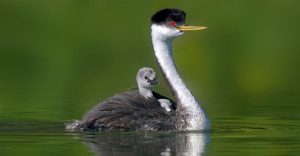 Location: Free parking on Delaware Ave and Natural Bridges Drive or pay to park inside of Natural Bridges State Beach, 2531 W Cliff Dr, Santa Cruz.
Location: Free parking on Delaware Ave and Natural Bridges Drive or pay to park inside of Natural Bridges State Beach, 2531 W Cliff Dr, Santa Cruz.
A fine destination for migrating songbirds and coastal access. Famous for spectacular gatherings of monarch butterflies, Natural Bridges is also a great birding destination. First explore the park interior to observe birds like California Thrasher, Pygmy Nuthatch and migrants. Next, scan the adjacent rocky shores and open ocean for birds like Black Oystercatchers, perhaps a Surfbird or two, look for loons, murrelets, Clark & Western Grebes, and perhaps a few Sooty Shearwaters and marauding Parasitic Jaegers.
A Walk Among Hawks at UCSC
Activity: Easy.
Location: Begin at UCSC Arboretum, Arboretum Rd, Santa Cruz, Entrance fee is $5 per person, free for Arboretum members.
The fields and forests of the UC Santa Cruz campus are home to a diversity of birds of prey. September is migration season for hawks so you can observe both resident birds and passers through. The UCSC Arboretum is an internationally famous collection of plant species from the climatically similar regions in Australia and South Africa. Continue into the Great Meadow above where hawks and vultures are regularly observed hunting and interacting. Stop to observe the plentiful array of other bird species that call this campus home, and grow your bird lists as we go. Children are encouraged to attend.
Raptors of San Benito County Backroads
Activity: Easy
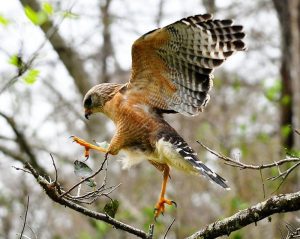 Location: Wander the back roads of San Benito County in a drive-stop-drive trip.
Location: Wander the back roads of San Benito County in a drive-stop-drive trip.
There should be an excellent array of raptors and residents such as Rock Wren, Oak Titmouse, White-breasted Nuthatch, the three local woodpeckers, and Yellow-billed Magpies. But as is often the case, the rock stars of birding trips are often birds of prey. Golden Eagle, Northern Harrier, Red-tailed and Red-shouldered Hawks, possibly several species of falcons, and even wannabe raptors like Loggerhead Shrike can be expected. Bring lunch, snacks and drinks–there are no facilities on this trip so expect bush stops; bathrooms are scarce or unavailable. Sunscreen, water, a hat, and a full tank of gas are essentials.
New Brighton Beach and Pine Forest
Activity Level: Moderate
Location: Use street parking on Coronado Street and Balboa Ave in Capitola.
New Brighton State Beach includes patches of willows, oaks, and a fine Monterey Pine forest, all of which are attractive to both migrating and wintering birds. Townsend’s Warblers, Pygmy Nuthatches, Downy and Hairy Woodpeckers, and Brown Creepers are all likely to be seen. The adjacent waters of Monterey Bay are a good place to view Caspian, Elegant, and Forster’s Terns, and sometimes even a Parasitic Jaeger!
Birding Quail Hollow Ranch
Activity Level: Moderate
Location: Parking lot at Quail Hollow Ranch – 800 Quail Hollow Rd, Felton,. Park in the free parking lot and meet in front of the park office.
Quail Hollow Ranch hosts a great diversity of habitats, including the endemic Santa Cruz sandhills, offering a good opportunity to see many of the western birds and California specialties. You will likely encounter Nuttall’s Woodpecker, California Thrasher, Wrentit, and more. This will be an excellent opportunity to learn about Quail Hollow nest box projects for Western Bluebirds, Ash-throated Flycatchers, and other cavity nesters.
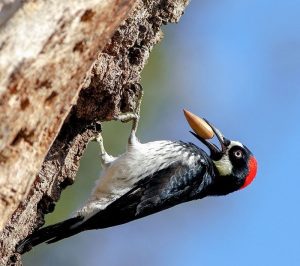 Exploring Elkhorn Slough Reserve
Exploring Elkhorn Slough Reserve
Activity: Moderate – Walking: 2.5 miles
Location: Elkhorn Slough Reserve – 1700 Elkhorn Road – Royal Oaks, CA Park in the free lot.
Explore the Coast Live Oak woodland and wetlands at the Elkhorn Slough Reserve. Oak specialties such as Hutton’s Vireos, Oak Titmice, White-tailed Kites, and maybe a Barn Owl or two live here. Acorn Woodpeckers will put on a good show while stocking and defending their granary trees, and, depending on tidal conditions, you will be able to oversee some of the interior tidal wetlands of “the Slough” proper. Be constantly on the alert for raptors such as Golden Eagles and Peregrine Falcons.
East Pinnacles National Park Reservoir Loop
Activity: High – temperatures vary, can be very hot. This hike is listed as “moderately” difficult and does include a fairly steady climb of several hundred feet as well as spots where participants will have to duck under low rock overhangs.
Location: Pinnacles National Park Visitors Center, $30 per car entrance fee, unless you have an annual pass–pay at park.
Enter the park on its east side and from there hike the 2.5 mile Reservoir Loop. You get to pass through a variety of habitats, including oak woodlands, chaparral, and riparian woodland. Plan a lunch picnic style at the Visitors Center near the campground, which presents one of the best chances for sighting the California Condor. Possible birds include a wide variety of raptors including Golden Eagles, Prairie Falcons, and California Condors. Additional possibilities include Yellow-billed Magpies, Acorn and Nuttall’s Woodpeckers, California Thrasher, Wrentit, White-throated Swifts, and Bell’s Sparrow. Make sure to wear comfortable shoes and hiking clothes, bring plenty of water, and be aware that there is very little in the way of food available for purchase in the park so please be sure to bring your lunch with you.
Point Lobos State Natural Reserve
Activity Level: Easy/ moderate. The trail is fully wheelchair accessible and is 0.6 miles round-trip, on hard-packed decomposed granite material. There are wheelchair accessible bathrooms at the Bird Island trail parking lot.
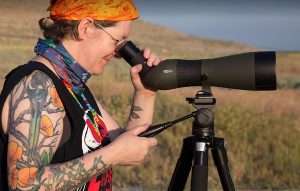 Location: Sea Lion Point Parking lot, 62 Point Lobos, Carmel-By-The-Sea,. There is an entrance fee into the park: $10 per vehicle, $9 for seniors, or $5 with pre-approved disabled discount card from State Parks.
Location: Sea Lion Point Parking lot, 62 Point Lobos, Carmel-By-The-Sea,. There is an entrance fee into the park: $10 per vehicle, $9 for seniors, or $5 with pre-approved disabled discount card from State Parks.
Explore the fully ADA accessible Sea Lion trail loop at Point Lobos State Natural Reserve. Look for the classic marine species such as cormorants and pelicans, plus seabirds like loons and murres and also shorebirds like the Black Oystercatchers, Black Turnstones and plovers. Locally breeding Peregrine Falcons and other raptors can make an appearance, plus chaparral birds around Sand Hill like California Thrashers and Wrentit. Bring binoculars or a spotting scope. Travel at a slow pace to better locate birds and have regular stops as needed. Bring a hat and sunscreen as there is little shade on the trail. On the flip side, if it’s foggy it could be cold, so bring a jacket too.
This list is adapted from Monterey Bay Festival of Birds’ 2022 guided trip list for your personal family birding adventures.



